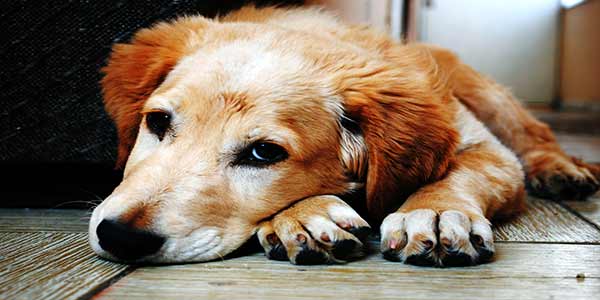The Cost of Owning a Dog
You want a dog. You are not alone. If you are a millennial you are more likely to have a dog before marriage or having children.

Best Friend Forever
A dog is not a "practice baby." Dogs are like children that never grow up and leave home. They will never be able to care for themselves.
You’re a making a lifetime commitment in both time and money for your BFF.
♦ Keeping your dog healthy and happy will take a significant investment. It is not as much as college tuition but it could mean the difference between buying a new car or a used one.
Most pet owners say it is money well spent. It is difficult to put a price tag on unconditional love and affection.
• The cost of owning a dog is more than just the expense for food, while the benefits are much more than providing companionship.
A dog’s average lifespan is 12 years. The majority of pet owners do not consider the lifetime costs. People think more in terms of cost per month or year.
♦ The American Society for the Prevention of Cruelty to Animals (ASPCA) estimates the annual cost of dog ownership at:
• Small dog at least $1,000
• Medium-size dog at least $1,200
• Large dog at least $1,500
Fortune magazine puts the annual cost at closer to $1,650. They added up veterinary care, food, treats, boarding, grooming, vitamins, and toys.
♦ These will be ongoing costs that need to be planned for and budgeted for.
These do not include any special one-time costs like spaying and neutering or things like leashes, collars, beds or carrier cases.
Benefits
There are definite benefits of being a pet parent. Pets provide companionship, help reduce stress and can even improve your health.
• Dog owners are more likely to get outside and take a stroll through the park.
Puppy love
Puppy love comes with a price.
♦ Puppies are more expensive than adult dogs, since they need more shots and trips to the vet in the early years. Puppies may need more expensive procedures like spaying or neutering at a cost of around $300 to $500.
Petco was offering these services for only $20. The cost was supported by donations. It is not common to find groups supporting low cost spaying and neutering, you will need to do some searching.
♦ Puppies have a lot of energy so they will need more training and attention. Puppies like to chew pretty much everything in sight. You will need to be vigilant to keep them from getting hurt.
All dogs need exercise but puppies especially do. Walking your dog helps with behavioral issues and improves socializing skills. Dogs that are not walked enough may end up getting bored and can have higher expenses.
♦ Any new dog or puppy will come with substantial expenses.
You can buy a dog from a breeder or a pet shop but that will set you back $500 to $1,000. Reputable sellers try to sell healthy animals.
Puppy mills have animal rights people up in arms. It would be best to avoid these.
♦ If you don’t care so much about mixed-breed dogs than there are many shelters and rescue groups with dogs that would love to have a family.
Rescued dogs range from $50 to $200. These dogs cost more than shelter dogs because the rescue organization has invested more in preparing the dog for adoption. Most dogs will already have been vaccinated and spayed or neutered.
♦ The first thing you should do with your new dog is take it to a good veterinarian for a check-up. Exams range from $45 to $65. If blood work or other tests are needed the cost could easily reach $300.
This is an important visit that could help prevent little issues developing into major problems. It is important to take with you any records you received with your dog so the vet can make sure vaccinations are up-to-date.
• Puppies will need to visit the vet every few weeks until about 16 weeks of age. During this time, you will need to make a decision regarding spaying or neutering.
Initial costs
In the beginning there will be things like a bed, leash, collar, ID tags, and microchip along with food and water bowls. These need not be expensive but lower quality items will need to be replaced sooner.
• Puppies will usually require some “puppy proofing” of your home to keep them out of trouble.
Your dog may need training to improve socializing and basic manners. This training runs from $40 to $125 or more.
Ongoing expenses
Food — Size does matter. A four-pound Pomeranian can’t compete with a 100-plus pound Great Dane.
The cheapest is simple dry food while the more expensive will be can food and way-out stuff will be premium and holistic food. You can buy from a pet store, supermarket or online. Costs vary widely but the best estimate is about $150 to $1,000 per year.
Toys — Dogs and especially puppies need something to play with. Most will be content with an old tennis ball if it fits in their mouth. Some heavy chewers and destructive dogs will require frequent replacements.
Most pet parents go overboard.
Vet visits — At least a once a year checkup should be planned. At this time, vaccinations will be brought up-to-date and health issues caught early. Simple exams range from $45 to $65 and vaccines range from $15 to $28 per shot.
Annual blood tests are now being advised just like for people. Basic blood work falls in the $150 range.
♦ It would be best to plan $200 to $300 a year for these routine visits.
Dental care and cleaning runs around $200.
Eventually, your dog will need medications to prevent heartworms, fleas, ticks, and other parasites.
• If your dog fails a $45 heart worm test, you are now looking at treatment costs from $400 up to $1,000.
• Some vets are now promoting more human tests like – EKG, dental x-rays, eye pressure tests, ultrasounds and even MRIs. Most pets don’t need all these tests. However, depending on your pet’s age and health condition at some time during their life you will likely be encouraged to have some.
Emergencies are non-planned events and you may never have one. Typical emergencies run upwards of $1,000 and beyond.
Grooming — This depends a great deal on the breed. Short-haired dogs like the American Staffordshire Terrier will require little more than basic grooming while long-haired dogs probably need to visit the groomer on a routine basis.
The vast majority of people prefer long-haired dogs. The ShiTsu is a favorite because it is both small and long-haired.
♦ On average, expect to pay between $30 and $90 for standard grooming, depending on the size of your pet and the amount of fur. A good quality brush is worth the investment.
Misc. — There’s licensing, crates, supplements, dog walkers or sitters, and if you travel a lot there can be doggy day care costs.
Conclusion
All pet parents want to do what is best for their furry family member without worrying about the cost. With some planning and a little luck, it is possible to live a long and happy life together.





